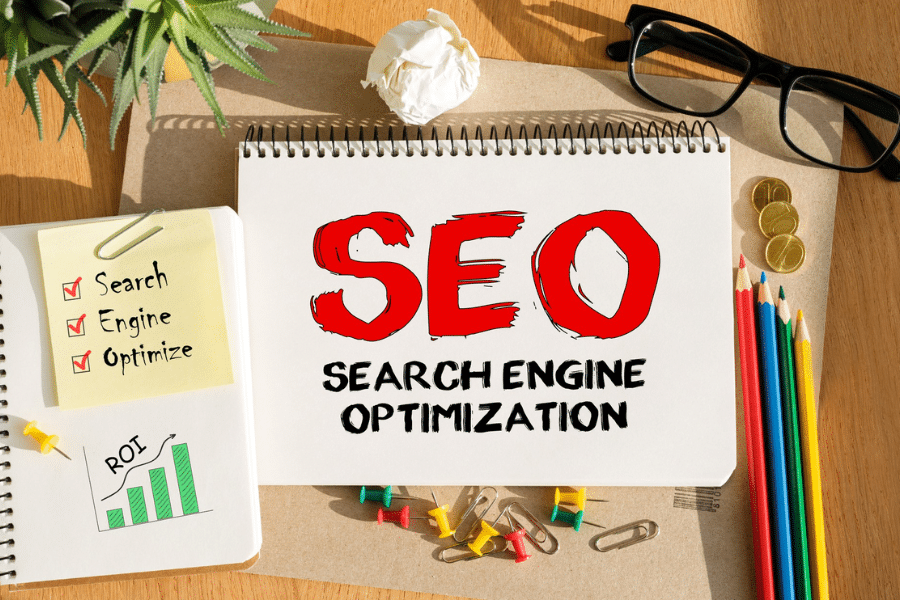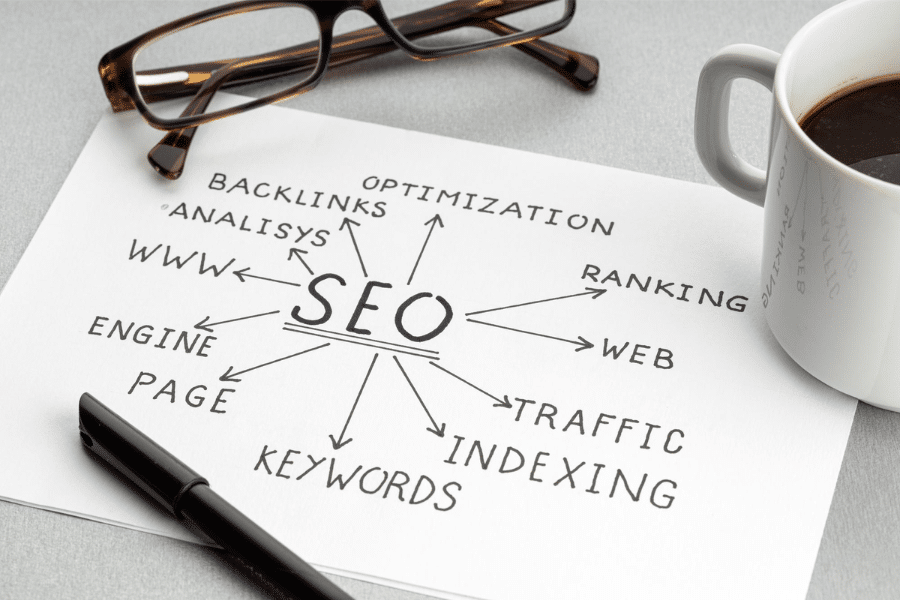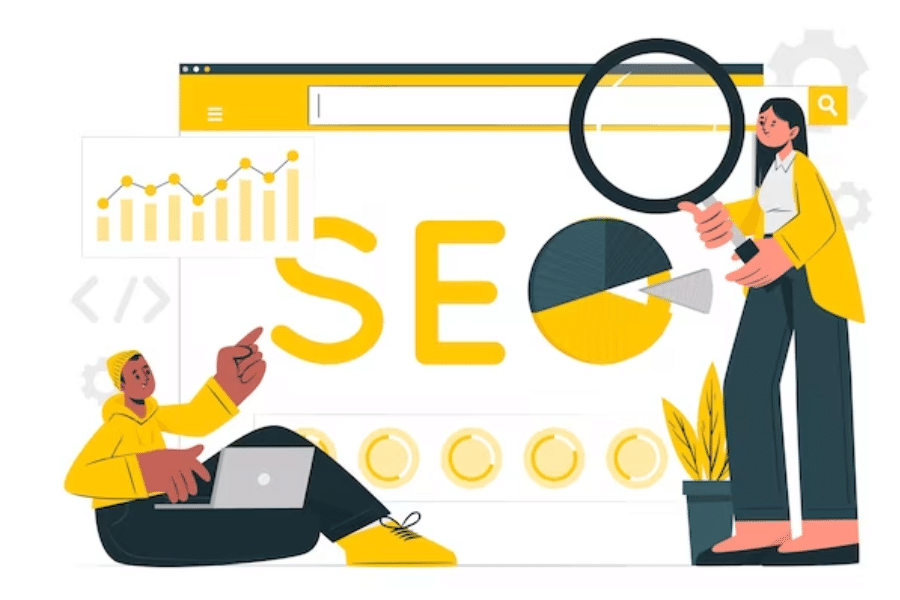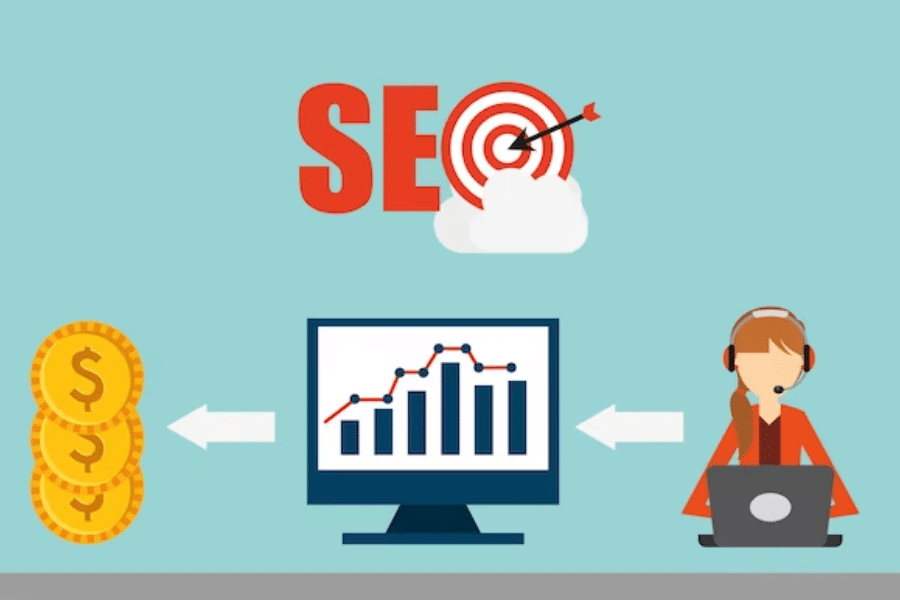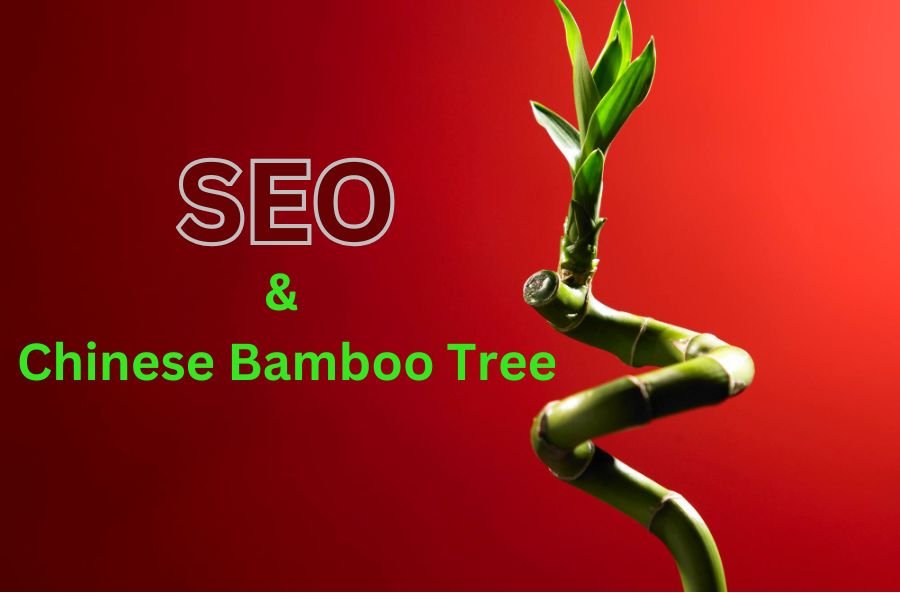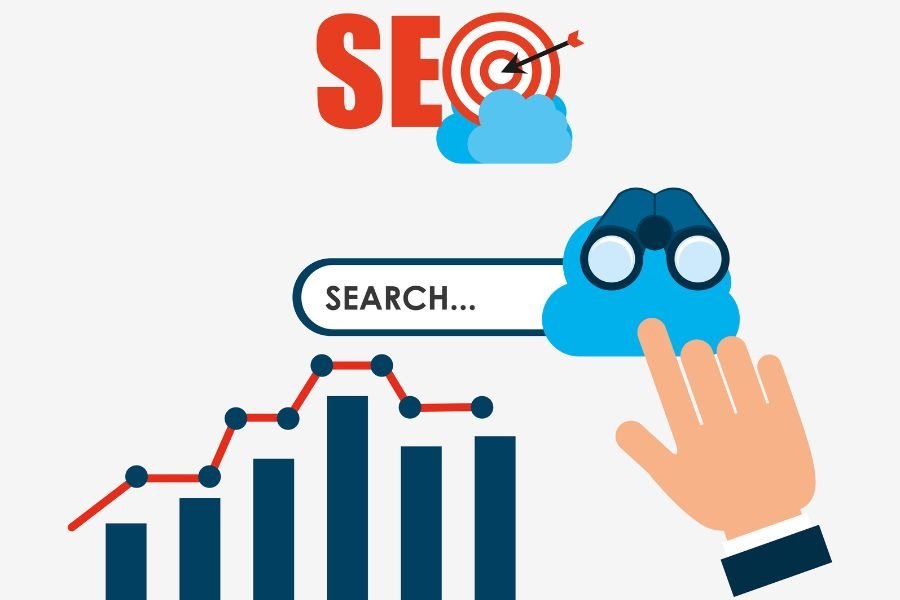Introduction
Search Engine Optimization, commonly referred to as SEO, is a critical aspect of digital marketing and online visibility. In this digital age, where the internet plays an integral role in our lives, understanding and utilizing SEO is paramount for businesses, website owners, and anyone looking to establish a strong online presence. This introduction will provide a comprehensive overview of what SEO is and its significance in the online world.
Definition of SEO
This subsection is likely to provide a clear and concise definition of SEO. It will explain what SEO is and may touch on its fundamental purpose, which is to improve a website’s visibility in search engine results. SEO involves optimizing various elements of a website to make it more attractive to search engines like Google, Bing, or Yahoo. This includes on-page and off-page tactics to enhance rankings.
Importance of SEO
This part of the introduction emphasizes the significance of SEO in the digital age. It may discuss why businesses and website owners should care about SEO and the benefits it offers. The importance of SEO may be related to factors such as driving organic traffic, increasing online visibility, and ultimately, improving a website’s performance and ROI (Return on Investment).
Evolution of Search Engine Optimization
This subsection is likely to provide a brief historical overview of how SEO has evolved over time. It may touch upon how SEO practices have changed in response to search engine algorithm updates, technological advancements, and shifts in user behavior. The evolution of SEO is relevant because it shows that the field is dynamic and ever-changing, requiring constant adaptation.
How Search Engines Work
Search engines, like Google, Bing, or Yahoo, are digital tools that people use to find information on the internet. These search engines use complex algorithms and programs to collect, index, and rank websites and web pages based on their relevance to users’ search queries. Understanding how search engines work is vital for SEO because it enables website owners and digital marketers to optimize their content and websites to rank higher in search results, ultimately increasing visibility and attracting more organic traffic.
Crawling and Indexing
This subsection likely discusses the first steps in the search engine process:
Crawling: Search engines use automated bots called “web crawlers” or “spiders” to navigate the internet and visit websites. These crawlers systematically traverse the web, following links from one page to another. They collect information from websites, such as text content, images, links, and more.
Indexing: After gathering data from websites, search engines organize this information into a massive database called an index. This index contains a structured representation of the content found during the crawling process. It allows search engines to quickly retrieve relevant information when users initiate a search query.
Ranking Algorithms
This part discusses the critical aspect of how search engines determine the order in which they present search results to users:
Ranking Algorithms: Search engines use complex algorithms to evaluate and rank the websites in their index. These algorithms consider various factors to determine the relevance and quality of a website’s content. Factors like:
Complex Evaluation: Search engines employ intricate and multifaceted algorithms to assess and rank websites within their search index.
Relevance and Quality: These algorithms aim to gauge the relevance and quality of a website’s content to ensure the most valuable and pertinent results appear in search listings.
Keyword Analysis: One significant factor in ranking algorithms is keyword analysis. Search engines assess how well the content aligns with the search query and whether the keywords are appropriately integrated.
Backlinks: The presence and quality of backlinks, which are links from other websites pointing to the site in question, are considered by ranking algorithms. High-quality, authoritative backlinks can boost a site’s credibility.
User Engagement: User engagement metrics, such as time spent on the site, bounce rate, and click-through rate, are evaluated. These metrics provide insight into the user experience and content quality.
Relevance to Search Query: Algorithms aim to match websites with the user’s search intent, ensuring that the results align with what the user is looking for.
Content Quality: The overall quality of the content, including its accuracy, comprehensiveness, and value to the user, is a significant factor. High-quality content tends to rank better.
Authority and Trustworthiness: Search engines assess a website’s authority and trustworthiness, considering factors like the site’s history, the credibility of its sources, and the presence of trust signals like secure connections and privacy policies.
Mobile-Friendliness: With the increasing use of mobile devices, algorithms also evaluate how well a website performs on mobile platforms. Mobile-friendly sites are more likely to rank higher.
User Experience: Factors related to user experience, such as page loading speed, site navigation, and mobile responsiveness, are essential for ranking.
Frequent Algorithm Updates: Search engines frequently update their algorithms to improve the quality of search results, which necessitates ongoing SEO efforts to maintain and improve rankings.
Websites that are considered more relevant and authoritative are typically ranked higher.
Role of Keywords
The third subsection is likely focusing on the significance of keywords in the context of SEO:
Role of Keywords: Keywords are terms or phrases that users input into search engines when looking for information. Understanding the role of keywords is fundamental in SEO. Website owners and content creators optimize their content by including relevant keywords that users are likely to search for. By strategically using keywords in their content, website owners aim to increase their chances of ranking higher in search engine results for those specific queries.
On-Page SEO
On-Page SEO refers to the strategies and techniques used to optimize various elements of a webpage to improve its search engine ranking and visibility. This includes making improvements directly on the webpage itself rather than external factors.
Content Optimization:
Content is a fundamental element of on-page SEO. This involves creating high-quality, relevant, and valuable content for your webpage. You should also use the target keyword, in this case, “Search Engine Optimization,” strategically within the content to signal its relevance to search engines.
Meta Tag:
Meta tags are HTML elements that provide information about a webpage to search engines and users. The most important meta tags for SEO are the title tag (which specifies the title of the page) and the meta description (a brief summary of the page’s content). These tags should be optimized for the focus keyword.
URL Structure:
The structure of your webpage’s URL is also important for SEO. A clear and descriptive URL that includes the focus keyword can help search engines and users understand the content of the page. For example, a good URL for a page about “Search Engine Optimization” might be something like “www.example.com/search-engine-optimization.”
Header Tags:
Header tags (H1, H2, H3, etc.) are used to structure the content on a webpage. They not only make the content more readable for users but also signal to search engines the hierarchy and importance of different sections. The main topic or focus keyword, “Search Engine Optimization,” can often be included in an H1 tag to emphasize its importance.
Internal Linking:
Internal linking involves linking to other pages or resources within your own website. This helps with the navigation of your site and spreads link equity to important pages. You can use internal linking to guide users to relevant content on your site, which can improve the overall user experience and SEO.
In summary, the paragraph focuses on On-Page SEO and its various components, with “Search Engine Optimization” as the main keyword. These components include content optimization, meta tags, URL structure, header tags, and internal linking, all of which are crucial for improving the visibility and ranking of a webpage on search engines like Google. Properly optimizing these elements can help your webpage rank higher in search results, making it more likely to be discovered by users searching for information related to “Search Engine Optimization.
Off-Page SEO
Off-Page SEO refers to the strategies and techniques used to improve a website’s search engine ranking that occur outside of the website itself. These are factors that are influenced by external elements.
Backlinks and Link Building:
This is the first sub-section under “Off-Page SEO.”
Backlinks are links from other websites that point to your website. Search engines consider backlinks as “votes of confidence” from other websites. High-quality backlinks can improve a site’s authority and trustworthiness in the eyes of search engines.
Link building is the process of actively seeking and acquiring backlinks from other websites. It’s a crucial off-page SEO strategy that involves creating valuable, shareable content and reaching out to other webmasters for links.
Social Signals:
This is the second sub-section under “Off-Page SEO.”
Social signals refer to the impact of social media on your website’s search engine ranking. This includes the number of social media shares, likes, comments, and engagement your content receives on platforms like Facebook, Twitter, and Instagram.
Search engines often consider content that receives significant social engagement as more valuable and relevant, which can positively influence rankings.
Online Reputation Management:
This is the third sub-section under “Off-Page SEO.”
Online Reputation Management involves monitoring and influencing what information appears when someone searches for your brand or business online. It’s about managing your online presence and ensuring that it reflects your brand positively.
This can include responding to reviews, addressing customer feedback, and actively managing your online profiles and content to maintain a positive online reputation.
In summary, this section of the document is discussing Off-Page SEO, which encompasses strategies that occur outside the website itself to improve its search engine ranking. The specific topics covered within Off-Page SEO include backlinks and link building, social signals, and online reputation management. These strategies are essential for enhancing a website’s visibility and authority in search engine results.
Local SEO
This section of the content appears to be discussing Local SEO, which is a specialized branch of SEO. Local SEO focuses on optimizing a website or online presence to rank better in local search results. This is particularly important for businesses that serve specific geographic areas.
Importance of Local SEO
This subsection likely discusses why Local SEO is crucial. In this part of the content, you can expect to find information about the benefits of optimizing a website for local searches. This could include improved visibility for local customers, increased website traffic, and the potential for higher conversion rates.
Google My Business
Google My Business is a specific tool or platform provided by Google to help businesses manage their online presence, especially in local search. It allows businesses to create a listing that appears in Google’s search results, Google Maps, and other Google services. Optimizing your Google My Business profile is a fundamental part of Local SEO.
NAP Citations
“NAP” stands for Name, Address, and Phone Number. NAP citations refer to the consistent and accurate listing of a business’s name, address, and phone number across various online platforms and directories. This consistency is crucial for local SEO because it helps search engines like Google verify the legitimacy and reliability of your business information.
In summary, the paragraph you provided is part of an article or section discussing the concept of Search Engine Optimization (SEO) with a focus on Local SEO. It mentions the importance of Local SEO, the use of Google My Business for local online presence management, and the significance of maintaining consistent NAP citations for local search optimization. These are all critical components of a comprehensive Local SEO strategy for businesses aiming to improve their online visibility in specific geographic areas.
The paragraph you’ve provided seems to be a section of a larger piece of content titled “What Is SEO – Search Engine Optimization?” with a focus keyword of “Search Engine Optimization.” This section discusses the concept of “White Hat vs. Black Hat SEO” and further breaks it down into two subtopics: “Ethical SEO Practices” and “SEO Penalties and Risks.” I’ll explain these concepts in detail.
White Hat vs. Black Hat SEO
SEO (Search Engine Optimization) is the practice of optimizing websites to improve their visibility in search engine results pages (SERPs). This can be done through various strategies, and they are often categorized into two main approaches: White Hat SEO and Black Hat SEO.
Ethical SEO Practices:
- White Hat SEO: This approach emphasizes ethical and sustainable SEO practices. It involves optimizing a website in ways that align with search engine guidelines and user expectations. White Hat SEO strategies aim to provide high-quality, relevant, and valuable content to users.
- Content Quality: Creating high-quality content that is informative, engaging, and useful to the target audience.
- Keyword Optimization: Researching and using relevant keywords naturally in content, without keyword stuffing.
- On-Page Optimization: Optimizing meta tags, headings, and other on-page elements for both users and search engines.
- Link Building: Building high-quality, relevant backlinks through outreach and networking.
- User Experience: Ensuring that the website is user-friendly, loads quickly, and is mobile-responsive.
- Black Hat SEO: In contrast, Black Hat SEO employs techniques that try to manipulate search engines, often in ways that are considered unethical and against search engine guidelines. The goal is to achieve quick, but often short-lived, improvements in search rankings.
- Keyword Stuffing: Overloading content with keywords in an unnatural way.
- Cloaking: Showing different content to search engines and users to deceive them.
- Link Farms: Creating or using low-quality, irrelevant, or paid links to boost rankings.
- Hidden Text or Links: Making text or links invisible to users but visible to search engines.
- Spammy Guest Posts: Publishing low-quality or irrelevant content on other websites for backlinks.
SEO Penalties and Risks:
Search engines like Google have algorithms in place to detect and penalize websites that engage in Black Hat SEO practices. The penalties can range from lowered search rankings to complete removal from search results. There are several risks associated with Black Hat SEO:
- Penalties: As mentioned, search engines can penalize websites for using unethical techniques. This can have a significant negative impact on a site’s visibility and traffic.
- Reputation Damage: Engaging in Black Hat SEO can harm a website’s reputation, making it untrustworthy to both users and potential business partners.
- Short-Term Gains, Long-Term Loss: While Black Hat techniques may yield quick results, these are often short-lived, and the long-term consequences can be severe.
- Legal Issues: Some Black Hat practices may even lead to legal consequences if they violate copyright laws or engage in fraud.
In summary, “White Hat vs. Black Hat SEO” explores the ethical and unethical approaches to SEO. White Hat SEO focuses on sustainable, user-centric strategies, while Black Hat SEO employs risky and unethical techniques that can lead to penalties and long-term damage to a website’s online presence. It’s crucial for website owners and digital marketers to choose ethical SEO practices to build a reputable online presence and avoid the associated risks.
Conclusion
In the ever-evolving landscape of the digital world, Search Engine Optimization (SEO) stands as a vital pillar in ensuring online success. By optimizing your web content and structure, you not only enhance your visibility on search engines but also reach your target audience effectively. As businesses strive to navigate this complex realm, the expertise of professionals becomes indispensable.
RK Media Digital Marketing Agency has emerged as a trusted partner in this journey, offering comprehensive SEO services that empower businesses to thrive in the digital sphere. In an era where the online presence can make or break a venture, SEO and the guidance of agencies like RK Media are indispensable tools for achieving sustained growth and prominence in the digital realm.
Image Reference: Freepik
Disclaimer: All trademarks, logos, and brand names are the property of their respective owners. All company, product, and service names used in this website are for identification purposes only. Use of these names, trademarks, and brands does not imply endorsement.


